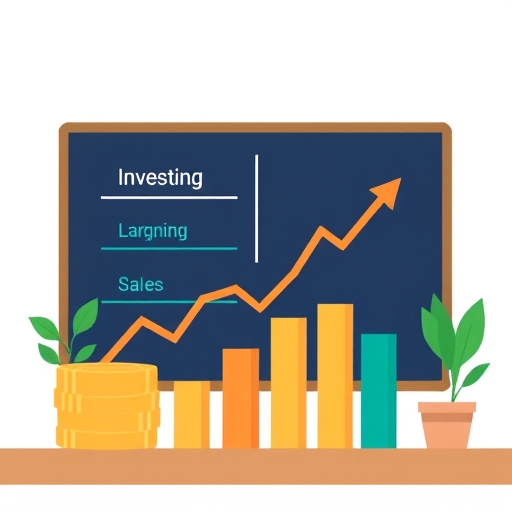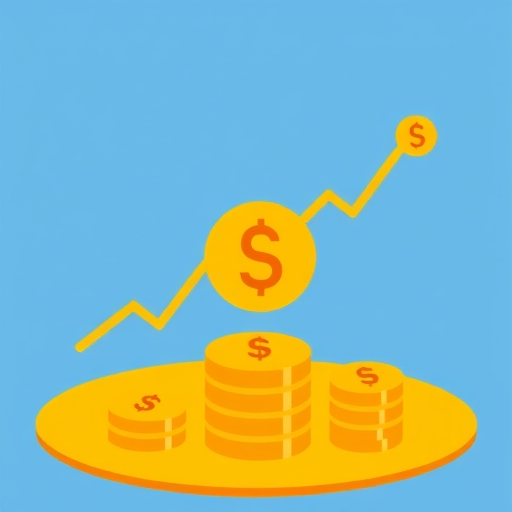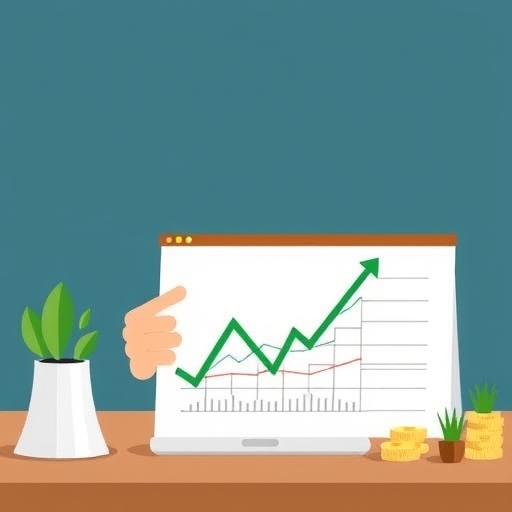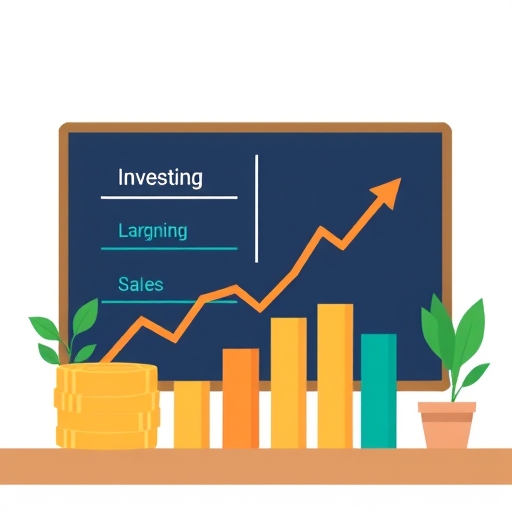Unlocking Investment Potential: Your Guide to Exchange-Traded Funds (ETFs)
Have you ever wondered how to invest in a broad range of companies or assets without buying each one individually? Or perhaps you’re looking for a flexible investment option that combines the benefits of mutual funds with the ease of trading stocks? If so, Exchange-Traded Funds, commonly known as **ETFs**, might be the answer you’re seeking. ETFs have revolutionized the investment world, offering a powerful blend of diversification, flexibility, and accessibility that appeals to investors across all experience levels. Much like a versatile multi-tool for your portfolio, ETFs allow you to tap into broad markets, specific sectors, or emerging themes through a single, convenient transaction. In this comprehensive guide, we will explore the core concepts, benefits, risks, and strategic applications of ETFs, equipping you with the knowledge to make informed decisions and confidently navigate the dynamic financial markets.
What Are ETFs and Why Do They Matter?
At its heart, an **Exchange-Traded Fund (ETF)** is an investment fund that holds a collection, or “basket,” of various securities such as stocks, bonds, commodities, or even real estate. What makes ETFs unique is that they trade on stock exchanges, just like individual stocks, throughout the day. This means their prices fluctuate based on supply and demand, allowing you to buy and sell them anytime the market is open. Think of it like a diverse grocery basket: instead of buying each fruit, vegetable, and meat separately, you buy a pre-selected basket that gives you a taste of everything, providing instant **diversification**.

The concept of ETFs took off in 1993 with the debut of the **SPDR S&P 500 ETF (SPY)** on the American Stock Exchange. This groundbreaking fund replicated the performance of the **S&P 500 index**, allowing investors to own a piece of 500 of America’s largest companies with a single purchase. This innovation democratized investing, making it easier for everyday people to gain broad market exposure without needing large sums or in-depth research into individual companies. Since then, ETFs have evolved dramatically, expanding to include bond ETFs around the turn of the millennium, followed by sector-specific, commodity, international, thematic, and **ESG (Environmental, Social, and Governance)** ETFs in later decades, reflecting changing investor preferences and market trends.
So, how do these “baskets” of investments actually work? The process involves specialized financial institutions called **Authorized Participants (APs)**. These APs buy the individual securities that make up an ETF (like the stocks in the S&P 500), deliver them to the ETF issuer, and in return, receive large blocks of ETF shares known as “creation units.” These creation units are then broken down and sold on the open market to individual investors like you. This unique “in-kind” creation and redemption process helps keep the ETF’s market price close to its **Net Asset Value (NAV)** – the total value of the underlying assets it holds. Unlike mutual funds, which are priced only once a day at market close, ETFs offer **real-time pricing** and transparency, with most disclosing their holdings daily. This clear visibility allows you to know exactly what you’re investing in.
To summarize, here are some fundamental characteristics of ETFs that make them attractive:
- ETFs are essentially baskets of securities, offering immediate diversification.
- They trade on stock exchanges throughout the day, providing real-time pricing and liquidity.
- Their unique creation/redemption mechanism helps keep their market price aligned with their underlying net asset value (NAV).
- Most ETFs are passively managed, aiming to track an index, which often leads to lower expense ratios.
The Diverse World of ETFs: Types, Advantages, and Key Features
The universe of ETFs is incredibly vast and continues to grow, offering a fund for almost every investment objective. Understanding the different types can help you choose the right ones for your portfolio. Let’s explore some of the most common categories:
- Stock (Equity) ETFs: These are among the most popular, tracking broad stock indices like the S&P 500 (e.g., SPY) or focusing on specific market segments such as small-cap companies or growth stocks. They provide broad exposure to the equity market.
- Bond ETFs: Offering exposure to government, corporate, or municipal bonds, these funds are often used for income generation and balancing risk in a portfolio. They track various bond indices.
- Sector and Industry ETFs: Do you believe in the future of technology or healthcare? These ETFs focus on specific market segments like the **Energy Select Sector SPDR Fund (XLE)** or the technology sector, allowing you to invest in industries you believe will outperform.
- Commodity ETFs: These funds track the prices of physical goods such as gold (**SPDR Gold Shares (GLD)**), silver, oil, or grains. They can act as an **inflation hedge** or a diversifier, either by holding the physical commodity or using futures contracts.
- International ETFs: Want to invest in economies beyond your home country? International ETFs provide exposure to foreign markets or regions like China or Europe, diversifying your geographical risk.
- Thematic ETFs: These funds invest based on specific, long-term trends, such as artificial intelligence (**Global X Robotics & Artificial Intelligence ETF (BOTZ)**), clean energy, or cybersecurity. They allow investors to tap into emerging growth sectors.
- ESG ETFs: For those who want their investments to align with their values, **Environmental, Social, and Governance (ESG)** ETFs focus on companies with strong practices in these areas.
- Real Estate ETFs: Containing **Real Estate Investment Trusts (REITs)**, these offer exposure to the real estate market without directly owning property, often providing dividend income.
Beyond these core types, there are also specialized funds like **Currency ETFs** (dealing in foreign currencies) and **Actively vs. Passively Managed ETFs** (most are passively managed, simply tracking an index, while actively managed ones involve portfolio managers making independent investment decisions).
To further illustrate the breadth of options, here’s a quick overview of some common ETF categories and their general purpose:
| ETF Type | Primary Exposure | Common Investor Goal |
|---|---|---|
| Stock (Equity) ETFs | Broad market, sectors, or regions of stocks | Long-term growth, capital appreciation |
| Bond ETFs | Government, corporate, or municipal bonds | Income generation, portfolio stability, lower risk |
| Commodity ETFs | Physical goods (gold, oil, agriculture) | Inflation hedge, diversification, speculative plays |
| Thematic ETFs | Specific long-term trends (AI, clean energy, biotech) | Targeted growth in emerging sectors |
| ESG ETFs | Companies with strong Environmental, Social, Governance practices | Values-based investing, sustainable growth |
So, why are so many investors, from beginners to seasoned pros, flocking to ETFs? The advantages are compelling:
- Diversification: This is perhaps the biggest benefit. By investing in an ETF, you automatically spread your money across multiple securities, asset classes, sectors, or geographies. This significantly mitigates the risk of any single security performing poorly, making your portfolio more resilient.
- Lower Costs: Because most ETFs are passively managed – meaning they simply track an index rather than having a manager actively pick stocks – they generally have lower operating expenses and **expense ratios** compared to actively managed mutual funds. Over time, these lower fees can make a significant difference to your returns due to the power of compounding.
- Liquidity: Just like stocks, ETFs can be bought and sold on exchanges throughout the day. This **intraday trading** capability offers greater flexibility than mutual funds, which are only traded once a day after the market closes.
- Accessibility: ETFs typically have no minimum investment requirements, making them accessible to investors with any budget. You can often buy just one share, making them a great starting point for building a portfolio.
- Tax Efficiency: The “in-kind” creation and redemption process of ETFs can defer capital gains taxes until you actually sell your ETF shares, making them generally more tax-efficient than traditional mutual funds.
- Simplicity: For many, ETFs offer a “set it and forget it” approach to gaining broad market exposure. You don’t need to research individual companies; you can simply choose an ETF that matches your desired market segment or asset class.
When selecting an ETF, it’s beneficial to keep several key factors in mind to ensure it aligns with your investment objectives:
- Investment Objective: Does the ETF’s goal (e.g., growth, income, stability) match yours?
- Underlying Index: What index does it track, and how well does it reflect the market segment you want?
- Expense Ratio: Compare the annual fees across similar ETFs, as lower fees can significantly impact long-term returns.
- Trading Volume & Liquidity: Higher volume generally means tighter bid-ask spreads and easier buying/selling.
- Tracking Error: How closely has the ETF’s performance mirrored its benchmark index?
- Issuer Reputation: Consider the reliability and track record of the ETF provider.
Navigating the Risks: Understanding ETF Drawbacks and Safeguards
While ETFs offer numerous advantages, it’s crucial to understand that no investment is without risk. Just like any other investment vehicle, ETFs come with their own set of potential drawbacks and challenges that you, as an informed investor, should be aware of.
First and foremost, ETFs are subject to **market risk**. If the overall stock market or the specific sector an ETF tracks experiences a downturn, the value of your ETF shares will likely decrease. For example, if you invest in an S&P 500 ETF like SPY and the broader market falls, your investment will reflect that decline.
Another consideration is **liquidity risk**, especially with niche or less popular ETFs. While major ETFs trade with high volume and tight **bid-ask spreads** (the difference between the highest price a buyer is willing to pay and the lowest price a seller is willing to accept), less liquid ETFs might have wider spreads. This means you could pay slightly more when buying and receive slightly less when selling, impacting your transaction prices.
Then there’s **tracking error**. An ETF aims to perfectly replicate the performance of its underlying index. However, due to factors like management fees, transaction costs, or challenges in buying all the underlying securities, an ETF’s performance might not perfectly match that of its index. While often small for large, well-established ETFs, it’s something to be aware of.

Understanding the various risks associated with ETFs is paramount for informed decision-making:
| Risk Type | Description | Impact on ETF |
|---|---|---|
| Market Risk | Overall market downturn affecting all investments. | ETF value declines with the broader market or sector it tracks. |
| Liquidity Risk | Difficulty buying or selling less popular ETFs without affecting price. | Wider bid-ask spreads, higher transaction costs. |
| Tracking Error | ETF’s performance deviates from its underlying index. | Returns may be slightly lower or higher than expected. |
| Leverage/Inverse Risk | Amplified daily gains/losses, complex compounding for long-term holds. | Rapid and significant value decay, unsuitable for most investors. |
| Expense Ratio Risk | High annual fees eating into returns. | Lower net returns over time, especially with compounding. |
Now, let’s talk about a category of ETFs that requires extra caution: **leveraged and inverse ETFs**. These are designed for sophisticated, short-term traders, not for the average investor looking for long-term growth.
- Leveraged ETFs: These funds use financial derivatives and debt to amplify the daily returns of an underlying index, often by double or triple (e.g., a 2x leveraged S&P 500 ETF aims for twice the daily return of the S&P 500). While this can lead to amplified gains on good days, it also means **outsized losses** on bad days. Compounding over time can lead to significant deviations from what you might expect, making them unsuitable for holding longer than a single day.
- Inverse ETFs: These are designed to profit when an underlying index or market falls (e.g., **ProShares Short S&P 500 (SH)**). They essentially “bet against” the market. Like leveraged ETFs, they are complex, designed for short-term bearish bets or hedging, and carry significantly higher risk due to their daily rebalancing and potential for rapid value decay over longer periods.
Do you really understand the complex mechanisms and daily rebalancing of these high-risk funds? If not, it’s best to steer clear. For most investors, the potential for outsized losses far outweighs the speculative gains.
Finally, while generally lower than mutual funds, some actively managed ETFs or those with complex strategies can have higher **expense ratios**. Always check this annual fee, as even small percentages can significantly erode your long-term returns. Also, with passively managed ETFs, you have a lack of control over individual asset choices within the fund; you’re simply buying the basket as it’s designed.
Building Your ETF Portfolio: Investment Strategies and Practical Steps
Before diving into specific ETF selections, laying a solid foundation is crucial. Consider these initial steps:
- Define Your Financial Goals: Are you saving for retirement, a down payment, or a child’s education? Clear goals will shape your strategy.
- Assess Your Risk Tolerance: Understand how much volatility you can comfortably handle without panic selling. This will guide your asset allocation.
- Determine Your Time Horizon: Longer horizons generally allow for more aggressive, growth-oriented investments, while shorter horizons might require more conservative approaches.
- Educate Yourself: Continuously learn about market dynamics, investment principles, and the specific ETFs you are considering.
- Start Small and Gradually Increase: Begin with an amount you’re comfortable with and increase your contributions as your confidence and knowledge grow.
The first step is **choosing the right ETF**. This isn’t about picking a winner, but about finding a fund that matches your **investment goals**, **risk tolerance**, and **time horizon**. Are you saving for retirement decades away, or a down payment on a house in five years? Do you welcome market volatility for higher potential returns, or do you prefer a more stable, albeit slower, growth path? Research factors like:

- The tracking index: What market or asset class does the ETF aim to replicate?
- Performance history: How has it performed over various market cycles? (Remember, past performance is not indicative of future results.)
- Expense ratio: This is the annual fee charged by the fund manager, expressed as a percentage of your investment. A 0.03% expense ratio means you pay $0.30 per year for every $1,000 invested. Even small differences here can compound significantly over decades.
- Liquidity: For larger, core investments, stick to highly liquid ETFs with tight bid-ask spreads.
Once you’ve identified potential ETFs, you’ll need a **brokerage account** to buy and sell them. This can be with a traditional financial advisor or, more commonly for individual investors, through an online discount broker. These platforms provide the tools and access to the stock exchanges where ETFs are traded. Buying and selling ETFs is just like buying and selling individual stocks. You can place a **market order** (to buy or sell immediately at the current market price) or a **limit order** (to buy or sell at a specific price or better). Prices will fluctuate throughout the day, giving you real-time control.
How do ETFs stack up against other popular investment vehicles?
| Feature | ETFs | Mutual Funds | Individual Stocks | Index Funds (Mutual Fund Type) |
|---|---|---|---|---|
| Trading Frequency | Intraday (throughout the day) | Once daily (at day’s end NAV) | Intraday (throughout the day) | Once daily (at day’s end NAV) |
| Pricing | Real-time, market-driven | End-of-day NAV | Real-time, market-driven | End-of-day NAV |
| Diversification | High (basket of securities) | High (basket of securities) | Low (single company risk) | High (tracks an index) |
| Costs (Expense Ratio) | Generally lower (especially passive) | Can be higher (especially active) | Brokerage commissions (per trade) | Generally low (passive) |
| Tax Efficiency | Generally higher (in-kind transfers) | Can be lower (capital gains distributions) | Taxes on gains when sold | Similar to mutual funds, but often more efficient |
| Minimum Investment | Often none (can buy 1 share) | Often has minimums ($1,000+) | Cost of 1 share | Often has minimums ($1,000+) |
Effective portfolio management often involves strategic asset allocation using ETFs. Here’s an example of how ETFs can be used for different risk profiles:
| Risk Profile | Typical Allocation (ETFs) | Example ETF Types |
|---|---|---|
| Conservative | 30% Stocks, 70% Bonds | Broad Market Stock ETF (e.g., S&P 500), Total Bond Market ETF, Short-Term Government Bond ETF |
| Moderate | 60% Stocks, 40% Bonds | Total Stock Market ETF, International Stock ETF, Corporate Bond ETF, Municipal Bond ETF |
| Aggressive | 90% Stocks, 10% Bonds | Growth Stock ETF, Emerging Markets ETF, Sector-Specific ETFs (e.g., Tech), High-Yield Bond ETF |
| Diversified (Example) | 50% US Stocks, 20% International Stocks, 20% Bonds, 10% Commodities | Vanguard Total Stock Market (VTI), iShares Core MSCI EAFE (IEFA), Vanguard Total Bond Market (BND), SPDR Gold Shares (GLD) |
ETFs play a strategic role in **portfolio management**. They provide broad market exposure for diversification across various asset classes, sectors, and geographies, helping to mitigate risk and potentially enhance returns. For income generation, **Dividend ETFs** invest in companies that consistently pay dividends, providing a steady stream of income. Furthermore, specific ETFs can be used for **hedging strategies**. For example, while risky for the average investor, an inverse ETF could theoretically be used to offset potential losses during a market downturn, or a commodity ETF like GLD (gold) can act as a “safe-haven” during periods of economic uncertainty.
The Future of ETFs: Emerging Trends and Regulatory Landscape
The world of ETFs is dynamic, constantly evolving to meet new investor demands and market conditions. As we look ahead, several key trends are shaping the future of these versatile investment vehicles.
One of the most significant developments is the accelerating growth of **thematic ETFs**. These funds focus on specific, long-term global trends that are poised for substantial growth. We’re seeing more and more ETFs dedicated to areas like artificial intelligence (AI), robotics, genomics, clean energy, and even space exploration. These thematic funds allow investors to “invest in the future” and capitalize on specific technological advancements or societal shifts. For instance, an ETF investing in AI companies like NVIDIA or Tesla provides a way to participate in the booming tech sector without trying to pick individual winners.
Another powerful trend is the rise of **ESG ETFs**. As investors increasingly seek to align their financial returns with their personal values, funds that prioritize environmental sustainability, social responsibility, and strong corporate governance are gaining immense popularity. These ETFs screen companies based on their ESG performance, allowing you to invest in businesses that are not only financially sound but also contribute positively to the world. This trend reflects a broader societal shift towards conscious capitalism and responsible investing.
Of course, with rapid growth and innovation often come potential **regulatory changes**. Governments and financial authorities continually review and update rules concerning transparency, the use of derivatives within ETFs (especially for leveraged and inverse funds), and the introduction of new ETF types, such as the recently approved **Bitcoin ETFs** like **iShares Bitcoin Trust (IBIT)**. These changes can profoundly impact how ETFs operate and how investors interact with them. Staying informed about these potential regulatory shifts is crucial, as they can affect everything from fund liquidity to tax implications and overall market stability. The global ETF market reached a significant milestone of $6 trillion in assets by late 2019, with European ETF assets projected to double by 2030, underscoring their rapid growth and market acceptance and the need for ongoing regulatory oversight.
Conclusion: Empowering Your Investment Journey with ETFs
Exchange-Traded Funds represent an indispensable component of today’s investment ecosystem, offering sophisticated diversification, cost-efficiency, and unparalleled flexibility. We’ve explored their definition, traced their historical evolution, delved into their diverse types, and weighed their compelling advantages against their inherent risks. From providing broad market exposure through **stock ETFs** to offering targeted investments in **thematic** or **ESG sectors**, ETFs empower you to build a robust portfolio tailored to your unique financial goals.

As you embark on or continue your investment journey, remember that understanding the nuances of ETFs – their types, advantages, and inherent risks, especially with complex products like **leveraged and inverse ETFs** – is paramount. Embrace continuous learning, always conduct thorough research, and understand your personal risk tolerance. By doing so, you can skillfully leverage ETFs to build a resilient portfolio that aligns with your financial aspirations and potentially contributes to a more sustainable future.
Disclaimer: This article is for informational and educational purposes only and should not be considered financial advice. Investing in Exchange-Traded Funds (ETFs) and other financial instruments involves substantial risks, including the potential loss of principal, and is subject to market volatility. Specialized ETFs, such as leveraged and inverse funds, carry significantly higher risks and are generally unsuitable for most investors. Past performance is not indicative of future results. Before making any investment decisions, you should conduct your own independent research, consider your personal financial situation, and consult with a qualified financial professional. We do not provide personalized financial advice, and this content should not be interpreted as such.
Frequently Asked Questions (FAQ)
Q: What is the primary difference between an ETF and a mutual fund?
A: The main difference lies in how they are traded and priced. ETFs trade on stock exchanges throughout the day, much like individual stocks, with their prices fluctuating in real-time. Mutual funds, on the other hand, are priced only once a day after the market closes, based on their Net Asset Value (NAV). ETFs also generally offer higher tax efficiency due to their in-kind creation and redemption process, where capital gains are often deferred until you sell your shares.
Q: Are ETFs suitable for beginner investors?
A: Yes, many ETFs are highly suitable for beginner investors, especially those that track broad market indices like the S&P 500 or a total stock market. They offer instant diversification across numerous companies or assets, often have low expense ratios, and typically have no minimum investment requirements beyond the cost of a single share, making them an accessible way to start investing. However, it’s crucial for beginners to avoid complex or specialized ETFs like leveraged or inverse funds, which carry significantly higher risks.
Q: How do I buy and sell ETFs?
A: To buy or sell ETFs, you need a brokerage account. Once your account is set up and funded, you can search for the specific ETF by its ticker symbol (e.g., SPY for an S&P 500 ETF) and place an order through your brokerage platform, similar to how you would trade individual stocks. You can use a market order to buy or sell immediately at the current market price or a limit order to specify a maximum buying price or minimum selling price, giving you more control over your transaction.



No responses yet